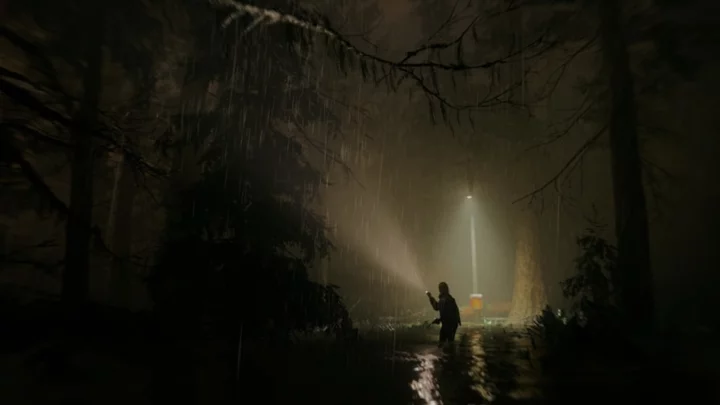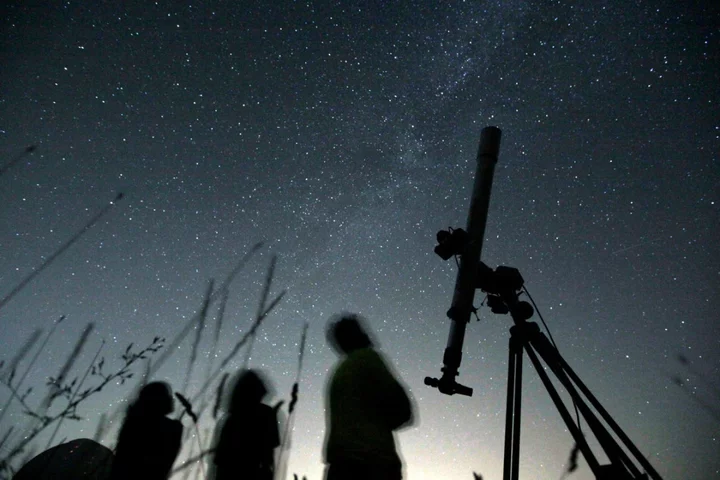
Southwest Gas Stock and More See Action From Activist Investors
Corvex Management raised its investment in energy firm Southwest Gas. Starboard Value bought more shares of electric utility Algonquin Power.
2023-10-28 06:22

How to Improve Cities: Skylines 2 Optimization
Many players have trouble running Cities: Skylines 2. Here's what you can do to make the game perform better.
2023-10-28 05:51

Here's Why Alan Wake 2 Isn't Available on Steam
Alan Wake 2 won't be coming to Steam anytime soon.
2023-10-28 04:26

5 Best Badges in Super Mario Bros. Wonder
These are the best Badges in Super Mario Bros. Wonder.
2023-10-28 03:49

How to Get Free Erling Haaland Item in EA Sports FC 24 Ultimate Team
Here's how to get a free Erling Haaland player item in EA Sports FC 24 Ultimate Team by just playing the game.
2023-10-28 01:50

Martin Odegaard FC 24: How to Complete the Centurions SBC
Martin Odegaard FC 24 Centurions SBC is now live and is one of the best items released all year. Here's how to complete the SBC segments.
2023-10-28 01:49

FC 24 Centurions Box-to-Box Midfielder Evolution: How to Complete, Best Players to Use
FC 24 Centurions Box-to-Box Midfielder Evolution program details including how to complete each challenge, full set of rewards and the best players to select and evolve.
2023-10-28 01:45

Fortnite Chapter 1 Map Release Date Confirmed
Fortnite Chapter 1 map will return to live servers on Nov. 3 in a new season bringing back classic locations like Tilted Towers and more.
2023-10-28 01:18

Infrared ‘aurora’ like northern lights spotted on Uranus could help find alien life, scientists say
Scientists have spotted an infrared aurora on Uranus that could help us find alien life. On Earth, aurorae are best known in the form of the northern lights, when bright light streaks across the sky. Uranus also has its own aurora – though it is not visible in the same way, because of the different atmosphere on that planet. Researchers have known about ultraviolet aurorae on Uranus since 1986. But now scientists have confirmed there are infrared aurorae on the distant planet, too. Scientists hope that the findings could help explain the magnetic fields of other planets in our solar system. And it could help us find out whether distant planets support alien life. Aurorae happen when charged particles arrive at a planet and hit its atmosphere, brought down through its magnetic field lines. To better understand those on Uranus, researchers analysed the light from the planet and watched for a specific charged particle that changes brightness depending on how how it is and how dense the atmosphere is, so that it can be used as a thermometer. The researchers found that the density of that particle significantly increased, which suggests they are being ionised by an infrared aurorae, they say. Scientists hope that will inform our understanding of other, similar planets, as well as which worlds might be suitable for alien life. “The temperature of all the gas giant planets, including Uranus, are hundreds of degrees Kelvin/Celsius above what models predict if only warmed by the sun, leaving us with the big question of how these planets are so much hotter than expected? One theory suggests the energetic aurora is the cause of this, which generates and pushes heat from the aurora down towards the magnetic equator,” said Emma Thomas from the University of Leicester, who was lead author on the new study. “A majority of exoplanets discovered so far fall in the sub-Neptune category, and hence are physically similar to Neptune and Uranus in size. This may also mean similar magnetic and atmospheric characteristics too. By analysing Uranus’s aurora which directly connects to both the planet’s magnetic field and atmosphere, we can make predictions about the atmospheres and magnetic fields of these worlds and hence their suitability for life. “This paper is the culmination of 30 years of auroral study at Uranus, which has finally revealed the infrared aurora and begun a new age of aurora investigations at the planet. Our results will go on to broaden our knowledge of ice giant auroras and strengthen our understanding of planetary magnetic fields in our solar system, at exoplanets and even our own planet.” The findings might also help explain a mysterious phenomenon on Earth known as geomagnetic reversal, where the north and south pole switch around. Scientists still know very little about that rare phenomenon, and how it might affect things such as satellites and communications. That process happens every day on Uranus, however. Researchers hope they can use its aurorae to get better data on the nature of that reversal – and what might happen if Earth has one, too. The findings are described in a new paper, ‘Detection of the infrared aurora at Uranus with Keck-NIRSPEC’, published in Nature Astronomy. Read More People don’t know their Uranus from Eridanus when it comes to astronomy Scientists find surprise ‘layer’ underneath surface of Mars Scientists see huge explosion in space – and it could explain life
2023-10-28 00:57

Sony defends PS Plus price hike: 'We want to make it great'
Sony is confident PS Plus subscribers are getting value for money.
2023-10-27 20:29

Skull and Bones faces SIXTH delay
'Skull and Bones' has been pushed back once again as Ubisoft amits to a tough time financially.
2023-10-27 20:27

Alan Wake 2 to get 'alternative narrative' and 'Nightmare difficulty level'
Remedy Entertainment has revealed details of the game plus mode.
2023-10-27 20:26
You Might Like...

Alibaba, NIO, XPeng Stocks Climb. Chinese Businesses Get a Regulatory Boost.

Sony plans to launch a sleeker PlayStation 5

Marvel Announces Upcoming Collaboration With Magic: The Gathering

Rainbow High: Runway Rush is here!

'Mama June: Family Crisis' star June Shannon slammed for not wearing bra in social media post

How to Turn Your Phone Into a Wi-Fi Hotspot

Modern Warfare 3 Map Voting Explained

Widespread Outage Locks Cash App Users Out of Funds
